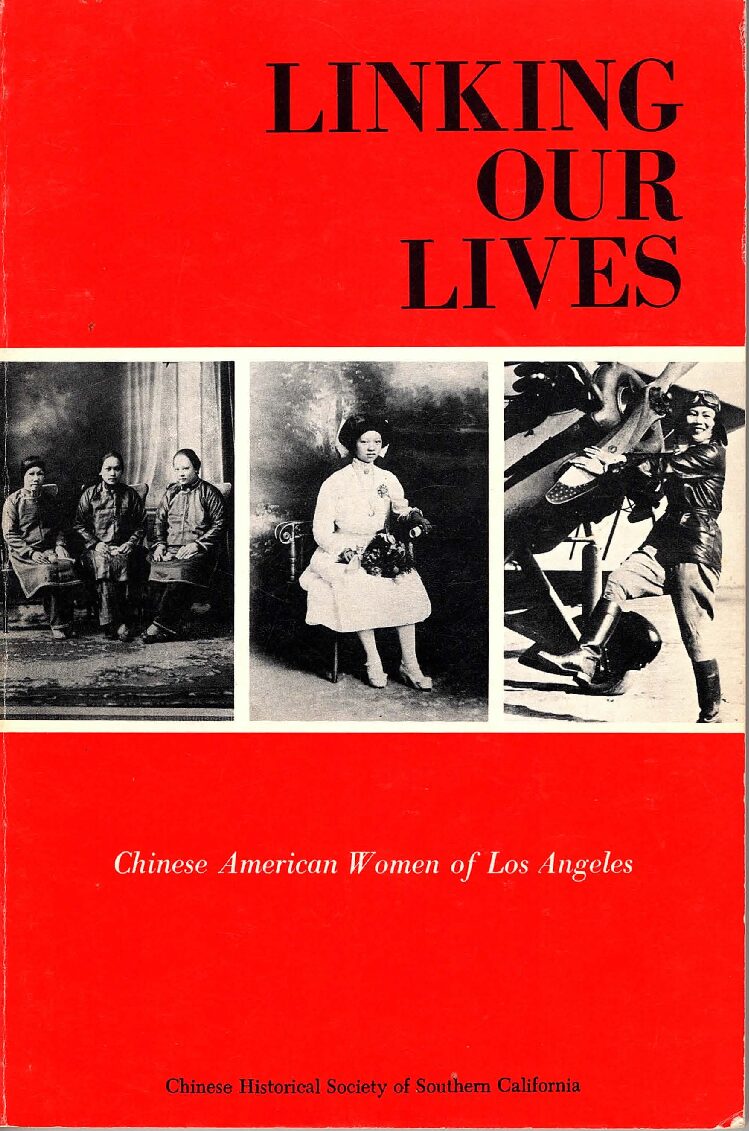By Dr. William Gow
Maxine Hong Kingston on Linking Our Lives –
It would be easy for Chinese American women to have disappeared – without visas and without a history. Linking Our Lives is a valuable gathering of the scholarship and oral histories of women, who in the retrieving of their past, find identity, a binding sense of sisterhood, and roots as pioneers right here in Los Angeles.[1]

Gum Saan Journal marks the fortieth anniversary of the publication of the Chinese Historical Society of Southern California and UCLA Asian American Studies Center’s Linking Our Lives: Chinese American Women of Los Angeles. Linking Our Lives was among the first books on Chinese American women’s history published. Prior to 1984, no books existed on the collective experiences of everyday Chinese American women. Filling this historiographical gap came Linking our Lives, with its distinctive red cover. This was a collaboration of stakeholders including academics, students, and community volunteers. The project brought together Asians in the diaspora and Asian Americans. The team had people from San Francisco Chinatown and from Hong Kong; from Montebello and from India; from Belmont, Massachusetts and from Los Baños, Philippines. The book went into several reprints.
The book was one part of a much larger project. Linking Our Lives was culled from the Southern California Chinese American Oral History Project which began six years earlier. The project, which drew its influence from the Japanese American Research Project (JARP), is the largest oral history project undertaken to focus on the lives of Chinese Americans in the late nineteenth and early twentieth centuries. Composed of 165 interviews, 400 hours of interview recordings, and more than 1700 pages of summary transcripts, this oral history project focused on Chinese Americans who lived in Southern California before 1945.
Linking Our Lives shared stories such as that of Him Gin Quon who was betrothed when she was nine; to Kay Wong Gee, widowed with five children; to Katherine Cheung, a member of the 99 Club of women pilots. The stories describe hardship, discrimination, and endurance.
Of course, the women and men who produced Linking Our Lives and who worked on the oral history project have their own history – one intimately tied to the growth of the Asian American movement, the push for ethnic studies, and a growing eagerness by communities of color to document their own histories. With this issue, Gum Saan Journal revisits the community historians who made these two projects possible. Unfortunately, Dr. Lucie Cheng, then the director of the UCLA Asian American Studies Center, passed in 2010. She had spearheaded this joint collaboration. This issue of GSJ features the perspectives of original project members and the voices of younger scholars reflecting on the meaning of the book to them. Taken together, this issue makes a case for seeing these two projects for what they were: foundational elements of Asian American historiography.
[1] Correspondence from Maxine Hong Kingston to Suellen Cheng, October 15, 1984, Women’s Book Marketing, Chinese Historical Society of Southern California Records. On the book’s 1984 back cover, author Maxine Hong Kingston had graciously written an endorsement.
